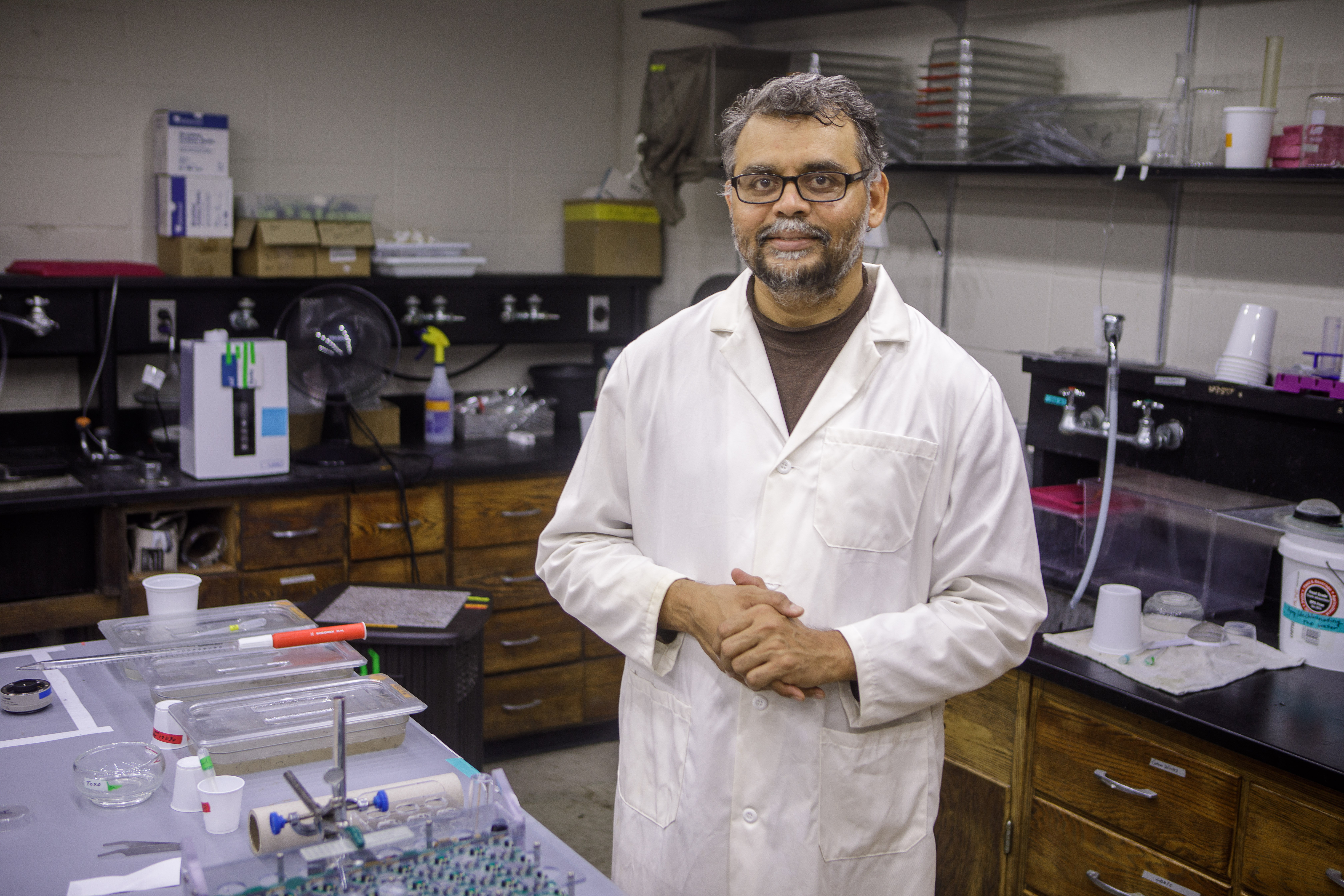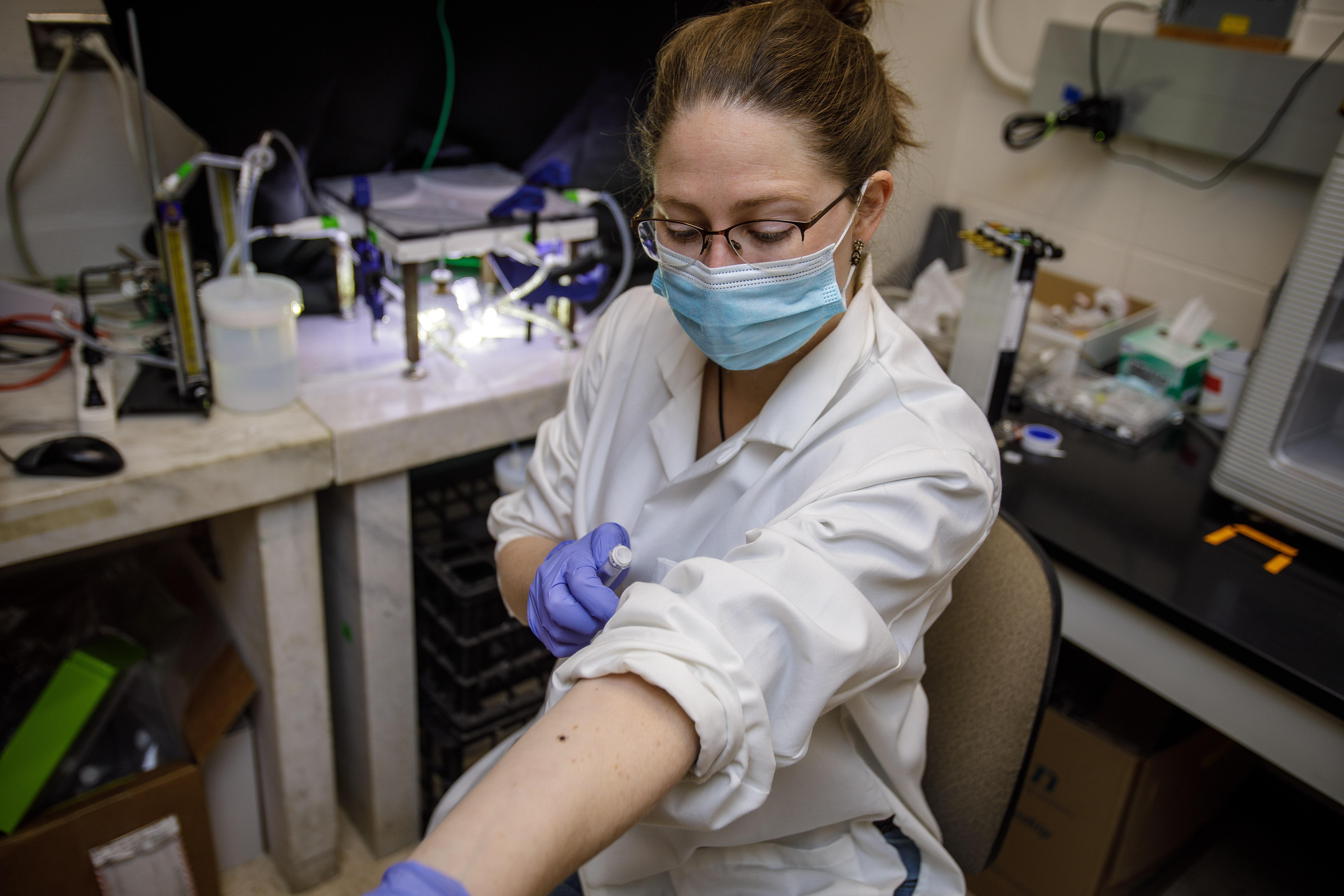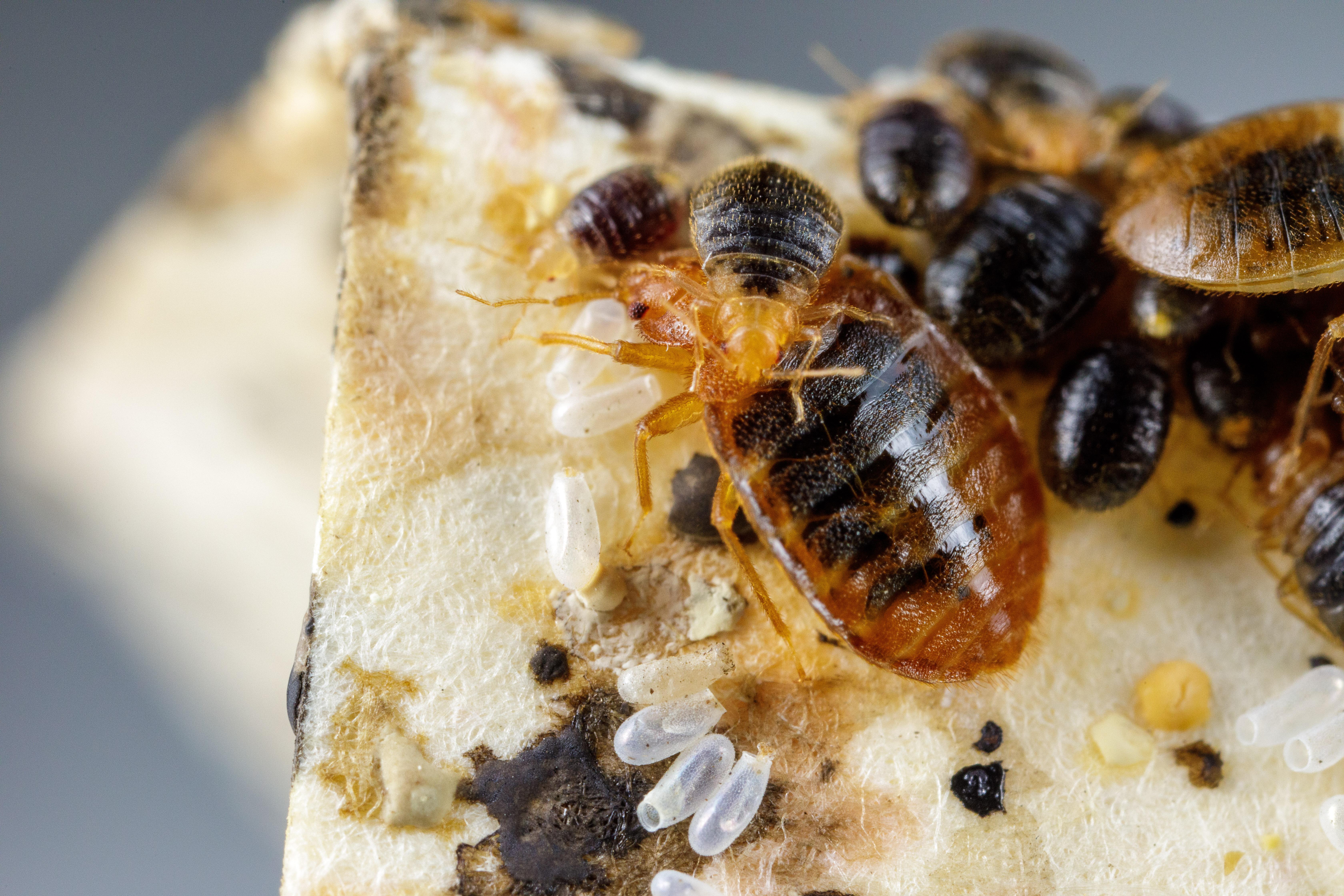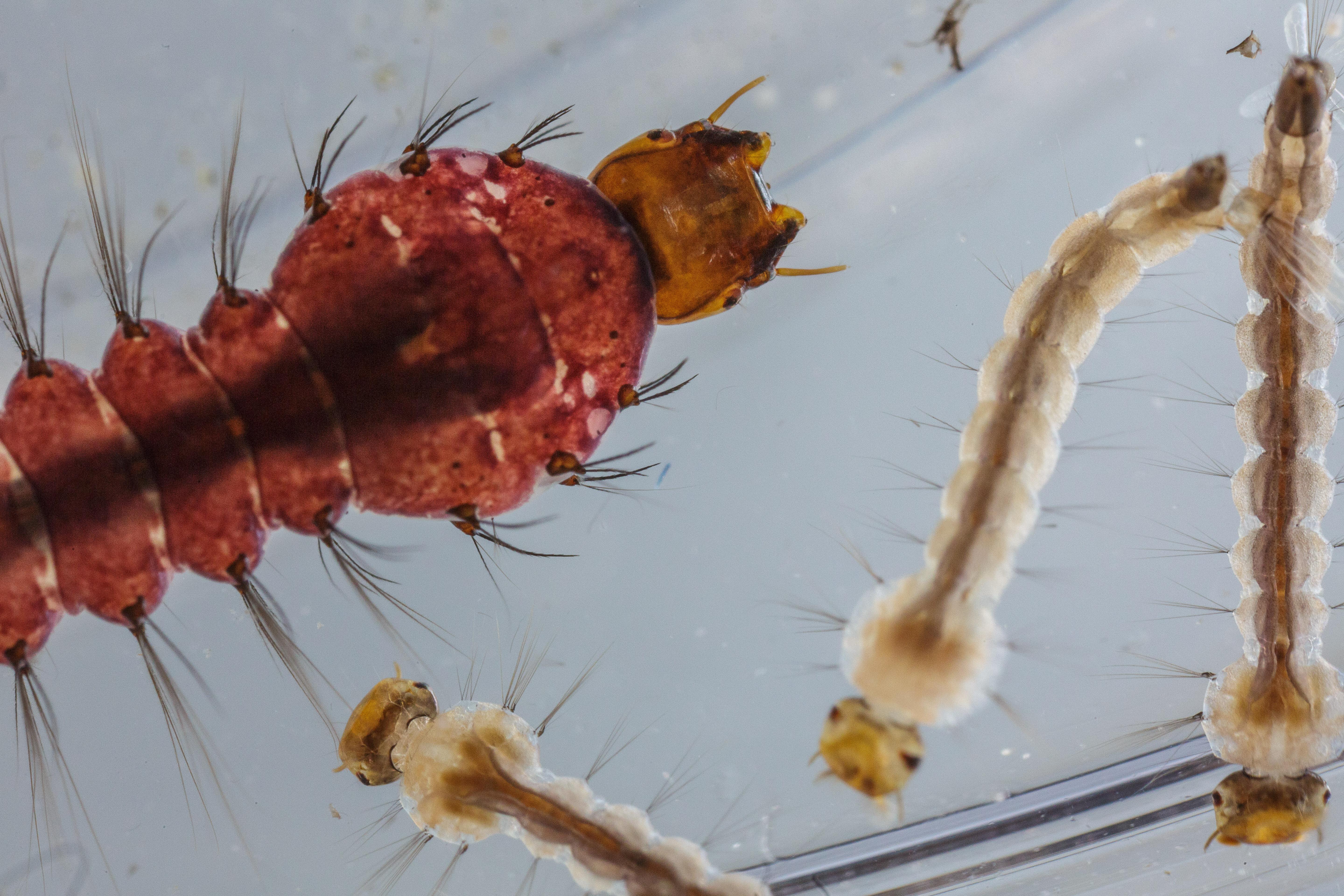Winning the bug battle
Winning the bug battle

Every year, people contract diseases from insects and ticks. These diseases can be life altering, and in some cases, life threatening and life ending. Entomologists in the University of Kentucky College of Agriculture, Food and Environment are working hard to develop innovative ways to control troublesome insects that prey on humans.
“Infectious diseases, including those transmitted by mosquitoes and ticks, are increasing worldwide,” said Reddy Palli, professor and chair of the UK Department of Entomology and state entomologist. “In 2019, the U.S. Congress passed the Kay Hagan Tick Act that funds research on ticks and mosquitoes. I am excited to see multiple labs in our department are conducting research to tackle vector-borne diseases and other public health problems.”
Tick Tacklers
Kentucky’s humidity, forests and large deer population make the state an ideal environment for ticks, but until recently, no one knew about the state’s tick population or how many carried diseases. Anna Pasternak, Palli’s graduate student, is leading the Kentucky Tick Surveillance Program. A partnership with the Kentucky Department of Public Health, the program’s goal is to inform entomologists, public health professionals, government officials and other stakeholders about the state’s tick population so they can prepare for the threat of new species and minimize the effects of tick-borne diseases.

Lucie Conchou works in Syed's lab. They are trying to use the tick's best attributes against it--it's sense of smell. Photo by Matt Barton
Pasternak collects ticks from across the state and receives ticks from Kentucky veterinary clinics. She crushes the ticks and analyzes their DNA to identify disease-causing pathogens.
“Preliminary results show that the greatest number of ticks exist in wooded areas of the state and at Land Between the Lakes, and 10% of them carry a pathogen that cause diseases like Lyme disease, Rocky Mountain spotted fever, alpha-gal and others,” Palli said. “We really did not expect pathogen presences in these ticks to be that high.”
The lone star tick is the most common tick found in Kentucky. It can cause alpha-gal syndrome, also known as the “red meat allergy.”
“Our goal is to take Anna’s data and educate farmers, loggers, physicians and health care workers about the ticks in the state and ways to minimize their effects,” Palli said. “For example, if someone gets bitten by a tick carrying the Lyme disease pathogen and they get an antibiotic within 72 hours, it is likely the antibiotic will kill the bacteria that causes Lyme disease. Not many people know that, and by the time symptoms appear, it’s often too late.”
UK entomologists are particularly concerned about Lyme disease. Blacklegged ticks are the main transmitter of Lyme disease, which is the top insect vector-borne disease in America. Lyme disease symptoms can start as painless rashes, fever, headache and fatigue but the disease can spread to a person’s joints, heart and nervous system.
Over the past 20 years, the range of these miniscule ticks has greatly expanded from where it was first found in New England to the eastern half of the United States. Cases of Lyme disease are growing along with the range expansion.
UK entomologist Zainulabeuddin Syed hopes to use one of the ticks’ biggest attributes against it. Like humans, ticks have brains and can smell. It is their sense of smell that often leads ticks to human hosts. Syed is studying how to use odors that are not attractive to blacklegged ticks to repel them along with scientists in the UK College of Medicine and the UK Department of Biology. His work is funded by the National Institutes of Health and Center for Arthropod Management Technologies, CAMTech.
“Ticks have large olfactory lobes, which are the brain centers that receive odor information and process,” Syed said. “Smell is extremely important for ticks as it helps them find their next host and meal.”
Ticks’ noses are located on their two front legs. Syed is studying the chemical composition of the odors that ticks are most and least attracted to and working to develop attractants and repellents. While still in the early stages, his lab is finding encouraging results that include potential repellents.
Syed is also interested in disrupting the mechanisms that cause the blacklegged tick to quest. Questing is when the tick climbs up an object, such as a blade of grass, hoping to attach to a mammal. His graduate student Kenny O’Dell Jr. is studying favorable conditions for questing and how scientists can prevent this behavior.
“We know that blacklegged ticks will not quest when it is really dry. We also know that they are the most active at dawn and dusk,” Syed said. “Kenny is studying their questing behavior and environment to see if we might be able to interrupt the questing behavior.”
Professor Brian Stevenson is also studying ways to minimize the Lyme disease reactions. Stevenson, who has a dual appointment in the UK College of Medicine and Department of Entomology, is leading studies to examine the bacterial pathogen that causes Lyme disease, Borrelia burgdorferi.
“The pathogen behaves differently inside ticks and humans,” Stevenson said. “It cannot make the tick sick, or the tick would not feed on humans, but once the pathogen gets inside a person, it triggers immune system responses where immune cells begin to attack the healthy tissues.”
By discovering how the pathogen knows whether it is inside a person or a tick and how the pathogen travels from the tick to the person, Stevenson can begin to understand the signals it uses to determine its location and develop targets that could confuse the bacteria into thinking it is a different spot. This would stop the spread of the disease.
“This technology really could be adaptable to a lot of diseases,” Stevenson said.
Bed bug bouncers

DeVries is studying how much histamine bed bugs produce. Photo by Matt Barton
Few pests can strike terror into travelers like bed bugs. These small, reddish-brown insects were nearly wiped out across the U.S. in the 1950s by the insecticide DDT. The insecticide was banned in the 1970s due to environmental and human health risks. Bed bugs reemerged in the country in the early 2000s, leaving pest control professionals and entomologists scrambling for control measures.
UK has a strong history of leading the way in the management of bed bugs. Michael Potter, UK professor emeritus, is one of the top bed bugs experts in the world.
Zachary DeVries, UK assistant professor, has a robust research program that continues to find ways to effectively manage these pests and determine their risk to human health.
With funding from the National Institutes of Health, DeVries is working to determine the potential for bed bugs to cause some people to develop allergies and asthma. Histamines are substances produced by humans to help fight off potential foreign bodily invaders, such as microbes and toxins. For years, bed bugs were only thought of as nuisance pests, causing itchy bites on humans when they seek a bloodmeal. Recently, scientists discovered bed bugs produce histamine, causing it to build up in infested homes. DeVries is studying how much histamine bed bugs produce, how it is dispersed throughout infested homes and how the histamine accumulation could impact human health.
“Scientists have no idea how chronic exposure to high doses of histamine might impact human health,” he said. “The presence of large histamine deposits in household dust and its multiple clinical effects (e.g., vasodilation, inflammation, neuromodulation) predict that dermal and respiratory exposure to histamine could constitute serious health risks.”
DeVries has also found that human skin triglycerides or lipids repel bed bugs. This finding could lead to new management strategies for this pest.
DeVries and Sudip Gaire, UK post-doctoral scholar, tested the finding by rubbing a strip of filter paper on research participants’ skin to collect samples. Participants represented numerous ages and ethnicities. They also tested the theory on multiple populations of bed bugs that were raised in the lab and collected in the field.
“Our findings were consistent across all triglyceride types, all participant groups and all bed bug populations,” DeVries said. “Bed bugs consistently preferred the control filter strip to the one containing skin triglycerides.”
While further research is needed to explore why bed bugs do not like triglycerides and if there are other potential bed bug repellents in human skin, DeVries and Gaire think this could be an important beginning to more effective bed bug control.
Mosquito Managers
“In the past 20 years, Kentucky has seen a rise in insect populations, especially insect disease vectors that were once only found in warmer climates,” Palli said. “These warmer weather vectors are much more efficient at transmitting a host of diseases.”
Mosquitoes are one of these insects.

Toxorhynchites rutilus septentrionalis (red) mosquito larvae feed on smaller mosquito larvae like the Aedes species (yellow). Photo by Matt Barton
UK entomologist Stephen Dobson has developed a natural way to sterilize male mosquitoes to reduce mosquito populations. He sterilizes male mosquitoes using a naturally occurring bacteria called Wolbachia. With special permission from the Environmental Protection Agency, he released sterilized males into areas across the U.S. and when females mate with them, they do not reproduce. Unlike female mosquitoes, males do not bite.
This technology led Dobson to start to a spin-off company, MosquitoMate, which sells the sterilized male mosquitoes. Through an EPA special use permit, the company carried out trials in Texas, Florida, California, Puerto Rico and Lexington, and Dobson submitted the results of those trials to the EPA. If the EPA deems the trials successful, the company will receive a pesticide permit, which will allow the pest control method to be available to homeowners. It will also provide a natural control method that reduces mosquito populations and pesticide use.
“The data looks great,” Dobson said. “We are optimistic that we will get the permit, but the process takes some time.”
In addition, Dobson is working with the Centers for Disease Control and Prevention to get Kentucky added to their national mosquito database. The database raises public awareness of mosquito populations by reporting mosquito abundance and mosquito-borne pathogens.
Syed is also working with mosquitoes to see if he can use different species against one another. In his laboratory, he is studying Toxorhynchites mosquitoes, which are among the largest mosquitoes in the world. While their size may make the average person shudder, these insects do not bite humans. These tree hole mosquito larvae feed on the larvae of other mosquito species which allows them to get the nutrition they need to reproduce. Syed is studying the factors that mediate these interactions so that tree hole mosquitos could be used for effective biological control. In his lab, he is specifically studying their ability to feed on Aedes aegypti mosquitos, which transmit diseases like Zika, dengue and chikungunya.
Palli’s lab is employing latest genetic methods including transcriptomics, transgenics and genome editing in Aedes aegypti to identify genes involved in the mosquito’s development and reproduction with a goal to use them as target methods for their control.
Cockroach controller
In the U.S., more than 25 million people suffer from allergies. This results in Americans spending $81 billion dollars each year to treat allergies. In many cases, cockroaches are to blame for allergy issues.
Indoor cockroaches, the most common kind being the German cockroach, produce several allergens to which a quarter of the population is allergic. These allergens can cause some to develop asthma as a result. Cockroaches also tend to be the most common in lower-income areas in inner cities.
Through funding from the U.S. Department of Housing and Urban Development, DeVries hopes to empower individuals to better manage cockroaches. He is evaluating public perceptions to cockroach management in affordable housing, the efficacy of current consumer and professional-grade management tools and working to develop a resident-centered cockroach management plan.
“Although the association between cockroach allergens and asthma has been known for decades, we still lack an effective, affordable, and sustainable cockroach management plan that can be easily implemented in affordable housing,” he said. “Additionally, residents are rarely involved in pest management, thus denying them the opportunity to improve their lives.”
German cockroaches are so difficult to control in residences because they have developed resistance to sprays containing pyrethroids over the years. Currently, baits are the most effective control method for managing cockroaches, but scientists still have questions about how long they remain effective after being applied.
With funding from the Pest Management Foundation, DeVries is working to evaluate whether bait age and indoor humidity affect bait efficacy.
While much research and work are still to be done, UK entomologists are taking positive steps to reduce the spread of insect-vectored diseases and improve the health of Kentuckians and people across the world.
Research reported in this publication was supported by the National Institute of Allergy and Infectious Diseases of the National Institutes of Health under Award Number R21AI163886 and the Office of the Director of the National Institutes of Health under Award Number DP5OD028155. The content is solely the responsibility of the authors and does not necessarily represent the official views of the National Institutes of Health.
Research reported in this publication was supported by the U.S. Department of Housing and Urban Development as part of an award KYHHU0061-20 totaling $400,000 with 100% funded by HUD.
Research reported in this article was also supported by the Pest Management Foundation.
Entomology Research



